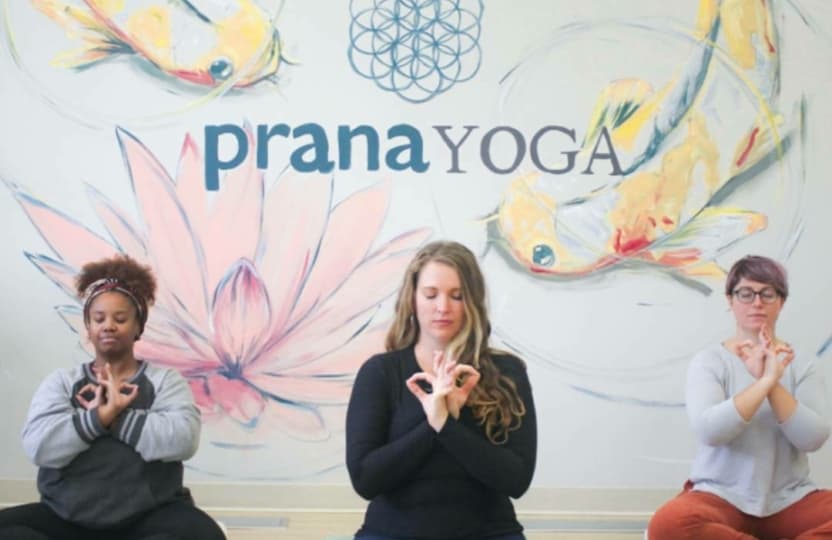
The Art of Healing Through Breathing Practices
Share
Breathing is often the unsung hero of the wellness narrative. An automatic process we perform roughly 20,000 times a day, it's the means by which we draw life into our bodies, yet we seldom give it a second thought. However, when we do pause to consider the enormity of breath — its cognitive, emotional, and physiological roles — we can unlock profound healing potentials within ourselves. This article is for practitioners of mindfulness seeking a deeper connection with themselves and for those familiar with pranayama who wish to refine their understanding of breathing's health modalities. We'll explore how conscious breathwork can be a powerful tool for stress reduction, enhancing mental clarity, and integrating the mind and body toward holistic health.
The Power of Pranayama
Pranayama, a rich tradition of breathwork in yoga, teaches us that the breath is the bridge between the conscious and unconscious mind. It is the life force, the vital essence that permeates the universe and sustains us. But how does the simple act of breathing become a pathway to healing?
Rather than counting years, ancient yogis counted the breaths, and for good reason. By engaging in specific breathing practices, one can affect not just the intake of oxygen and expulsion of carbon dioxide, but the entire physiological and energetic body. This practice, when approached with respect and the proper technique, can serve as both a profound meditative tool and an agent of physiological change.
Connecting with Breath
Before exploring the techniques, it’s important to begin with intention. Each breath can be a declaration, a Sankalpa, or purposeful intention set at the start of a practice. This intention can be to release fear, cultivate gratitude, or to simply be present in the moment. By acknowledging and setting a focused intention, the practice becomes more than just breathing — it becomes a meditative and healing experience.
Breath Assessment and Understanding Your Current Practice
To truly harness the healing power of breath, we must first assess our tendencies. Is your breath shallow or deep? Do you mainly use your diaphragm in the process, or are your breaths primarily chest-based? This introspective exercise sheds light on the current state of your relationship with breath. Once we understand the patterns, we can begin to adjust and optimize our breathing for well-being.
The Respiratory System Unveiled
The respiratory system's primary mission is clear — to transfer oxygen from the air into the bloodstream, where it is carried throughout the body. But it's the nuances that reveal breath's broader functions. The diaphragm, the principal muscle of respiration, initiates the inhalation. When it contracts, the thoracic cavity expands, and the lungs fill with air. Upon exhalation, the diaphragm relaxes, the cavity shrinks, and the body rids itself of carbon dioxide.
This process feeds our energy-hungry brains and ensures waste gases are expelled. But every aspect of this intricate dance is subject to modification through practice and intention.
Assessing Your Breath
Consider the depth, rhythm, and location of your breath. Optimal breath — the kind that fosters a restful state — originates from the diaphragm. Conversely, when the chest takes the lead, it's often a sign of stress and can lead to shallower, less efficient breathing. Understanding where you tend to breathe from provides insight and an entry point for change.
The Practices of Pranayama for Healing
With an awareness of your current breathing style, you can now venture into specific pranayama practices that serve as therapeutic interventions tailored to your needs.
Dirga Pranayama (Three-Part Breath)
This practice brings awareness to the full breath, offering a method for calming the nervous system. It involves filling the belly, ribs, and chest with breath in a full, expansive cycle, and then a slow exhalation while reversing the process. Dirga balances the oxygen and carbon dioxide levels, promoting a sense of calm.
Nadi Shodhana (Alternate Nostril Breathing)
Nadi Shodhana is a practice of balancing the two hemispheres of the brain while calming the central nervous system. By alternating the inhalation and exhalation through each nostril, you balance the maya koshas (layers of being) and purify the nadis (energy channels).
Sitali Pranayama (Cooling Breath)
Sitali involves inhaling through the rolled tongue or the purse of the lips to create a cooling effect. This practice soothes the system, reducing the impact of stress on the body and mind.
Ujjayi Pranayama (Victorious Breath)
Ujjayi is the breath often used in yoga, characterized by a soft hissing sound at the back of the throat. When practiced, it helps maintain a heightened state of awareness and can be grounding and calming.
Each of these techniques, when practiced regularly and with attention, offers healing potential. They can balance your mood, improve digestive function, and lower the heart rate — responses that are antithetical to stress.
Breathwork Beyond the Mat
Although practices like pranayama are often associated with long sessions of yoga, the benefits of conscious breath reach far beyond the mat. They can serve as anchors in everyday life, providing a calming tool in moments of stress or clarity in times of indecision. The breath can be your ally during conflicts, a lifeline in the rush of daily life.
Breathing is the most intimate relationship we have with the external world. It is the first and the last thing we do on this earth. By cultivating a conscious relationship with our breath, we foster a relationship with life itself — one that can bring about profound healing and well-being.